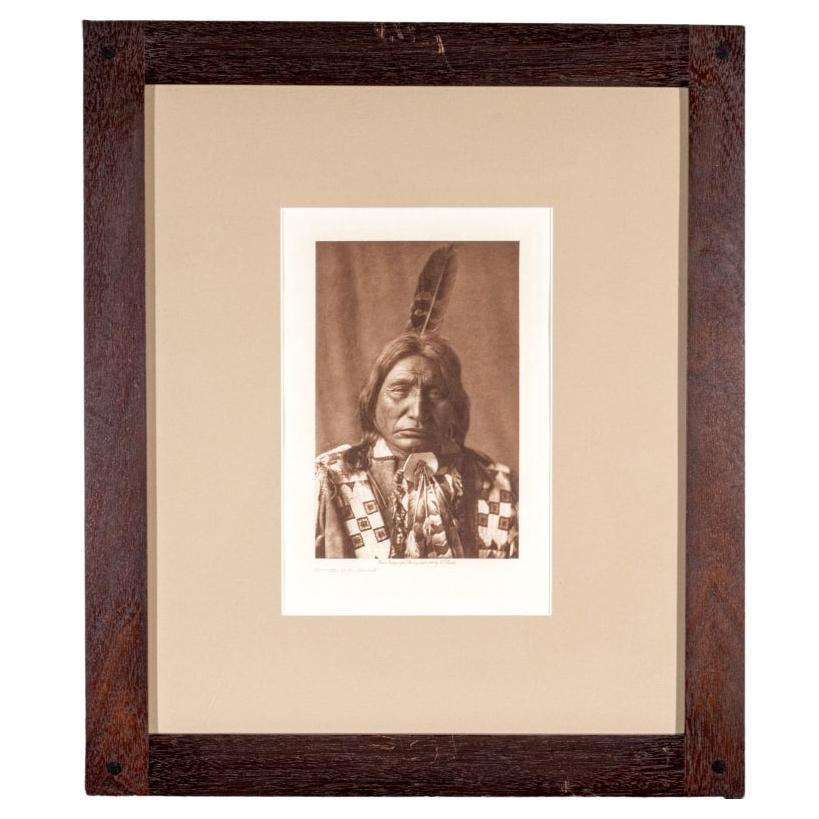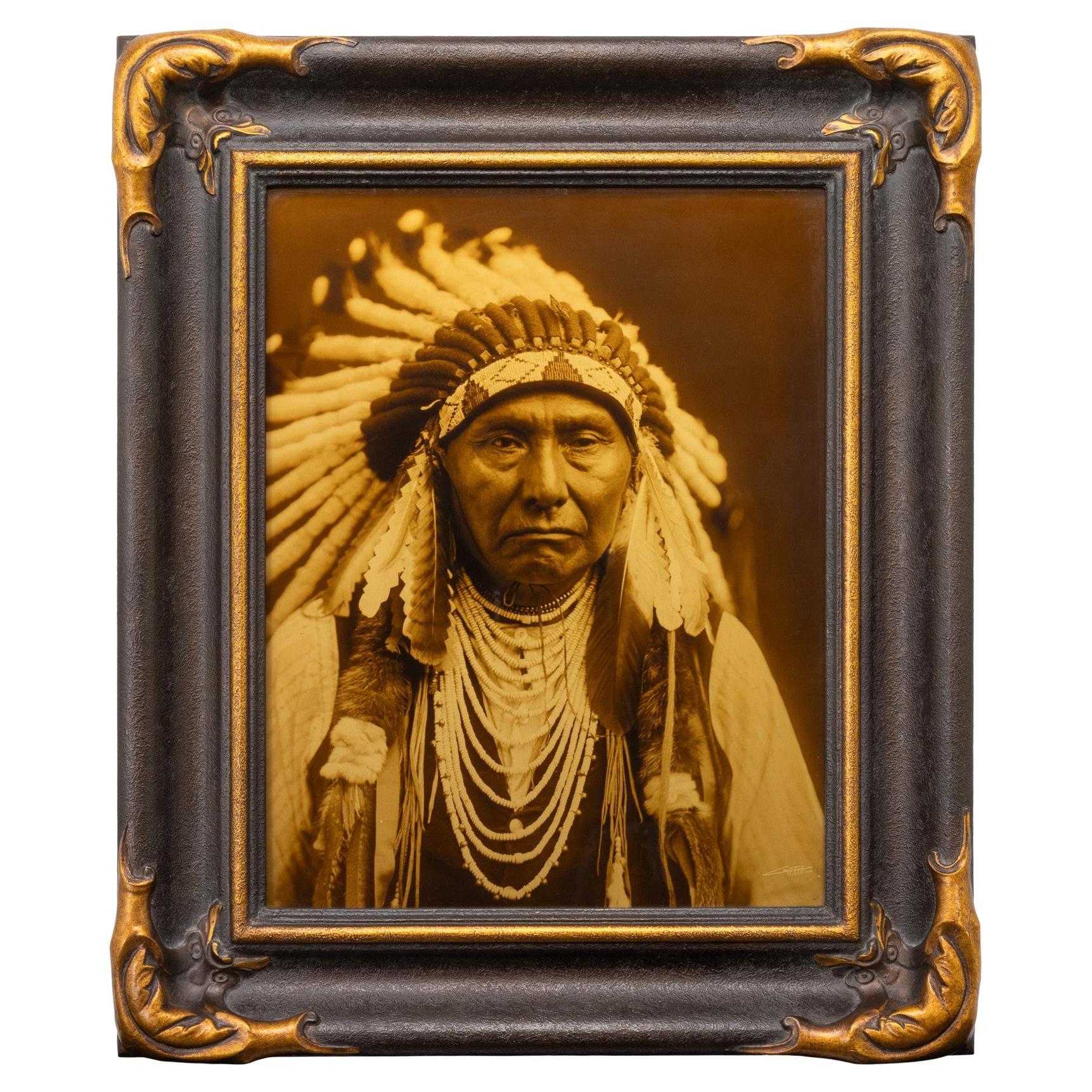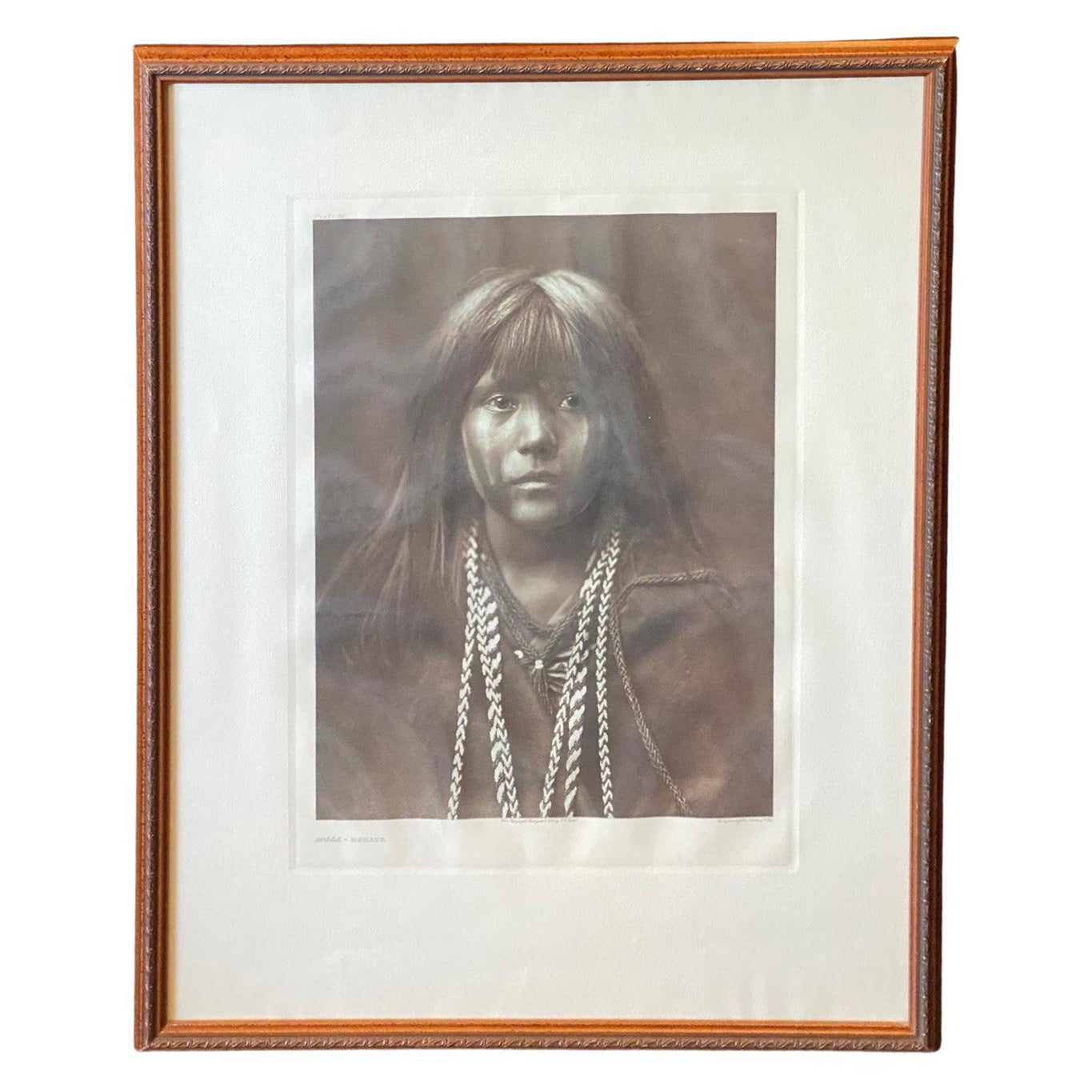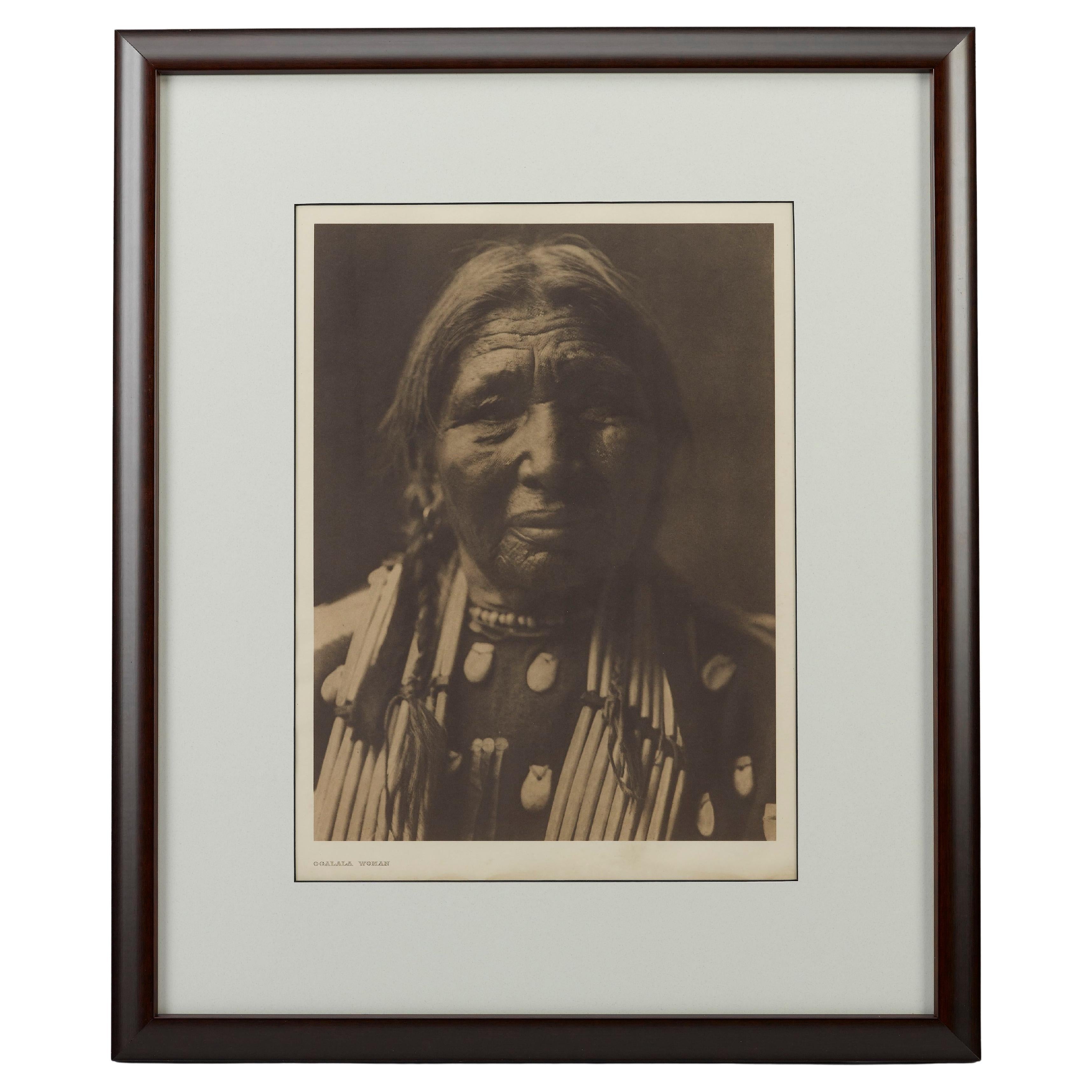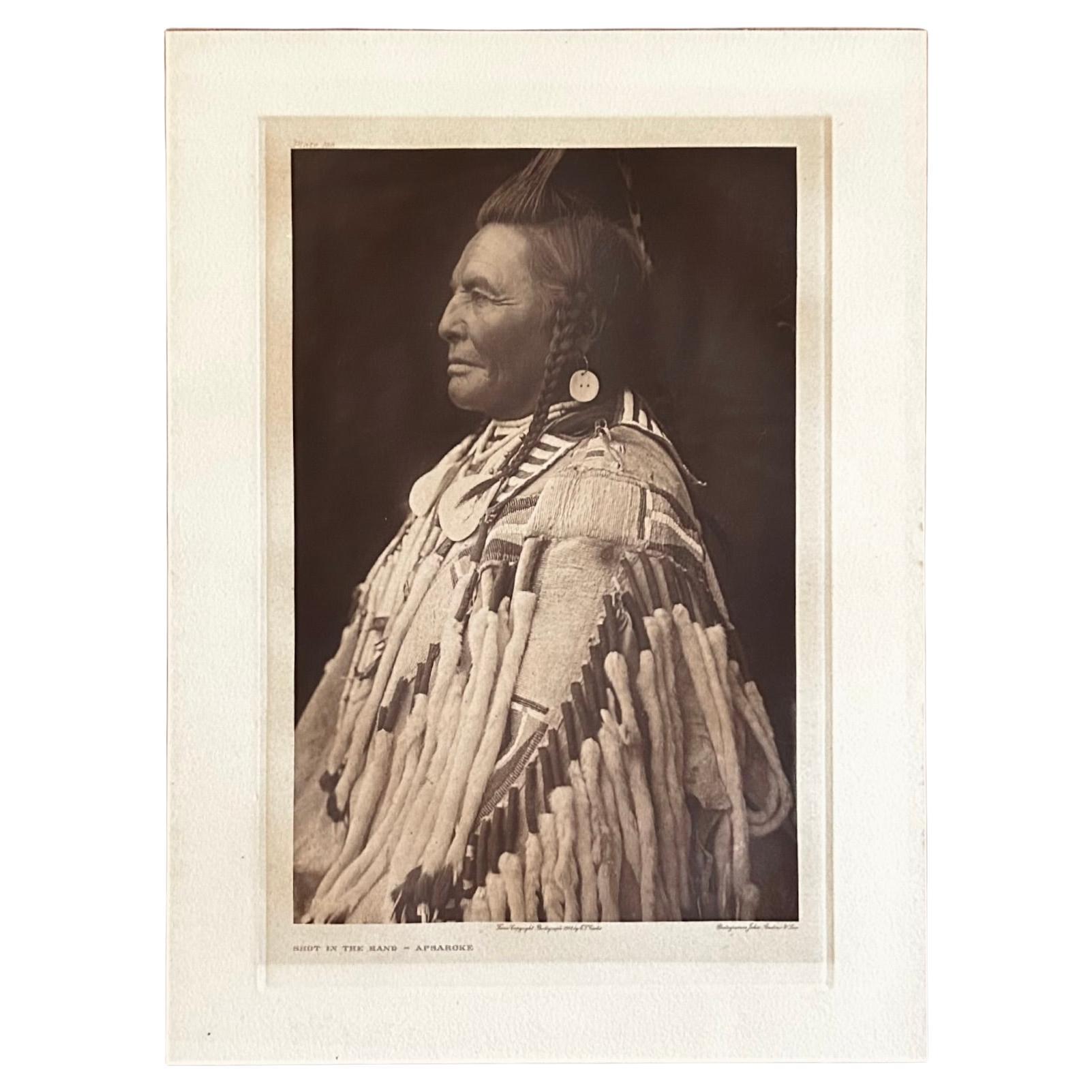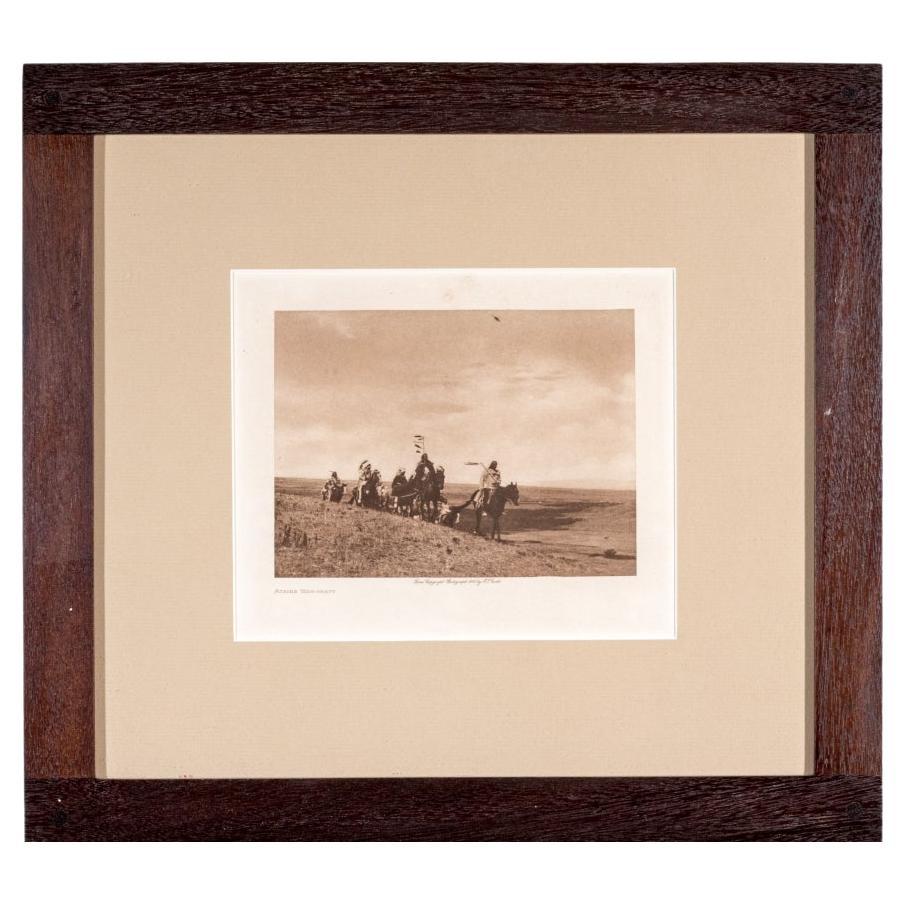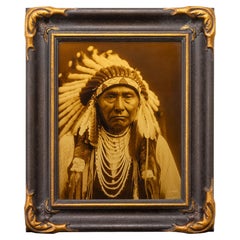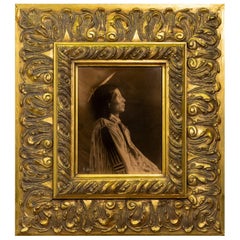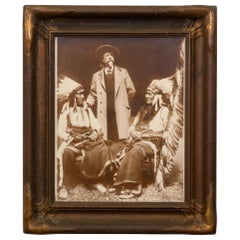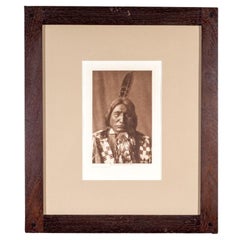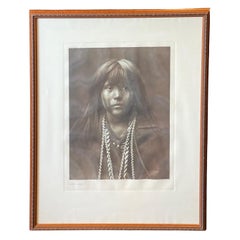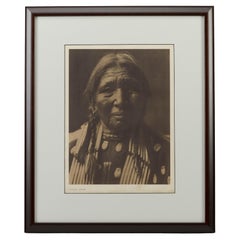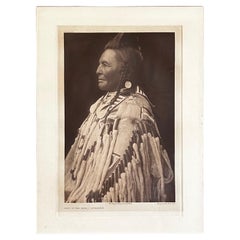Items Similar to "The Scout - Apache" by Edward Sheriff Curtis
Want more images or videos?
Request additional images or videos from the seller
1 of 7
"The Scout - Apache" by Edward Sheriff Curtis
$12,000
£9,092.28
€10,432.67
CA$16,885.94
A$18,562.29
CHF 9,755.49
MX$225,413.81
NOK 121,697.26
SEK 115,299.60
DKK 77,861.63
About the Item
1906 Orotone photograph on glass plate. Signed in negative lower right. A beautiful example of Edward Sheriff Curtis's work, featuring muted colors and a stark silhouette of an Apache Scout. Exceptional piece, perfect for any home. Early 20th century. Size: 14" x 17" frame 16 1/2" x 20"
Family Owned & Operated
Cisco’s Gallery deals in the rare, exceptional, and one-of-a-kind pieces that define the history of America and the Old West. Our pieces range from American Indian to Cowboy Western and include original items of everyday life, commerce, art, and warfare that tamed America’s frontier. Our 14,000 square foot gallery opened in 1996 in beautiful Coeur d’Alene, Idaho.
Personal Service
Cisco’s operates on old fashioned values – honesty and integrity, and all of our items are backed by our money back guarantee. We appreciate the opportunity to earn your business. Whether you desire assistance with a jewelry purchase, choosing a gift, identification, or even selling – we hope to be your trusted source.
- Dimensions:Height: 16.5 in (41.91 cm)Width: 20 in (50.8 cm)Depth: 3 in (7.62 cm)
- Materials and Techniques:
- Place of Origin:
- Period:
- Date of Manufacture:Unknown
- Condition:Wear consistent with age and use.
- Seller Location:Coeur d'Alene, ID
- Reference Number:Seller: AJ09091stDibs: LU4019343119962
About the Seller
5.0
Gold Seller
Premium sellers maintaining a 4.3+ rating and 24-hour response times
Established in 1996
1stDibs seller since 2018
248 sales on 1stDibs
Typical response time: <1 hour
- ShippingRetrieving quote...Shipping from: Coeur d'Alene, ID
- Return Policy
Authenticity Guarantee
In the unlikely event there’s an issue with an item’s authenticity, contact us within 1 year for a full refund. DetailsMoney-Back Guarantee
If your item is not as described, is damaged in transit, or does not arrive, contact us within 7 days for a full refund. Details24-Hour Cancellation
You have a 24-hour grace period in which to reconsider your purchase, with no questions asked.Vetted Professional Sellers
Our world-class sellers must adhere to strict standards for service and quality, maintaining the integrity of our listings.Price-Match Guarantee
If you find that a seller listed the same item for a lower price elsewhere, we’ll match it.Trusted Global Delivery
Our best-in-class carrier network provides specialized shipping options worldwide, including custom delivery.More From This Seller
View AllChief Joseph by E.S. Curtis Gold Tone
By Edward S. Curtis, 1868-1952
Located in Coeur d'Alene, ID
hief Joseph by E.S. Curtis. Centennial edition goldtone 22/200. Negative date 1908, printed date 1999. Pie crust frame. 11" x 14", frame 16" x 19"
Chief Joseph of the Nez Perce is s...
Category
Late 20th Century American Photography
Materials
Glass, Paper
"Juan Concho" Gold Tone by Carl Moon
By Carl Moon
Located in Coeur d'Alene, ID
"Juan Concho" gold tone photograph signed by Carl Moon; 8" x 10". Published "In Search of the Wild Indian" by Tom Driebe on page 144. This piece is in the original frame; was displayed in Carl Moon's studio and passed to his son and daughter where purchased. A copy of the book "In Search of the Wild Indian" comes with; rare and exceptional.
S OF CARL MOON
1903 to 1914
MS 285
Collection Guide
Born in Wilmington, Ohio, Carl E. Moon learned his craft as an apprentice to a photography studio. He moved to Albuquerque, New Mexico, opened his own studio, and made pictorial studies of Indians in the region. Between 1907 to 1914, he worked for Fred Harvey...
Category
Vintage 1910s American Native American Photography
Materials
Other
Original Buffalo Bill Cody, Chief Red Cloud, American Horse Photograph
Located in Coeur d'Alene, ID
Authentic, original D.F. Barry photo (3 marks), 11" x 14". Noted on back "William Cody, left of him is Red Cloud and right of him American Horse. Photo ta...
Category
Antique 1890s American Historical Memorabilia
Materials
Other
Hide Painting of Chief Red Cloud by Louis Shipshee
By Louis Shipshee
Located in Coeur d'Alene, ID
(1896-1975) Portrait painting of Chief Red Cloud Sioux by Louis Shipshee on hide mounted on board. Very nice painting by a great artist.
Period: Mid ...
Category
Mid-20th Century American Paintings
Materials
Hide
Gene Autry, Eddie Dean and Lash Larue SignedStudio Photographs
Located in Coeur d'Alene, ID
Three 8" x 10" studio photos of Gene Autry, Eddie Dean and Lash Larue all with original signatures.
PERIOD: Mid 20th Century
ORIGIN: Hollywood
SIZE: 8" x 1...
Category
Mid-20th Century American Photography
Materials
Art Glass
$250 Sale Price / set
72% Off
"Koy-Yahwa'mah" Gold Tone Photograph by Carl Moon
By Carl Moon
Located in Coeur d'Alene, ID
By Carl Moon signed gold tone; the woman is Maria Marcos, 1914. Published in "In Search of the Wild Indian" by Tom Driebe (Original frame), page 162. A copy of the book comes with.
...
Category
Vintage 1910s Photography
Materials
Other
You May Also Like
Edward S. Curtis (1868-1952) Rare Sepia Photogravure Titled "Spotted Elk - Brule
By Edward S. Curtis, 1868-1952
Located in Bridgeport, CT
Sepia photogravure titled "Spotted Elk - Brule" depicting a portrait of Spotted Elk from the Brule tribe.
The photogravure is titled lower left "Spotted Elk - Brule". Printed under t...
Category
20th Century American Native American Photography
Materials
Acrylic, Wood, Paper
Edward S. Curtis Original Photogravure Mosa Mohave The North American Indian
By Edward S. Curtis, 1868-1952
Located in Studio City, CA
A wonderful and very coveted original large-format photogravure by iconic American photographer Edward Curtis (1868-1952) titled "Mosa Mohave" Of this image Curtis noted “It would b...
Category
Antique Early 1900s American Native American Photography
Materials
Wood, Paper
"Ogalala Woman" by Edward S. Curtis, 1908
By Edward S. Curtis, 1868-1952
Located in Colorado Springs, CO
Presented is a fine photogravure portrait of an Ogalala woman by Edward Curtis. The image is Plate 94 from Supplementary Portfolio 3 of Edward Curtis' epic project The North American Indian. The caption provided by Curtis for this image is “A face so strong that it is almost masculine, showing strikingly how slight may be the difference between the male and female physiognomy in some Primitive people.” The photograph was taken in 1907 and the photogravure was published in 1908 by John Andrew & Son, in Boston.
Edward S. Curtis created one of the most enduring and iconic visual records in the history of the photographic medium. He was an award-winning artist, a consummate craftsman, a visionary, an intrepid entrepreneur, and was highly regarded as a respected ethnographer and publisher.
Curtis began photographing Native Americans in the mid-1890s and selling these images in his successful Downtown Seattle studio. One of his earliest models was Princess Angeline, the aged daughter of chief Sealth, the Suquamish Indian after whom Seattle is named. At the National Photographic Convention of 1899 Curtis was awarded the grand prize for three of his soft-focused, sepia-toned images of Puget Sound Native Americans: Evening on the Sound, The Clam Digger, and The Mussel Gatherer.
Curtis spent the summer of 1900 with George Bird Grinnell observing the Sun Dance at an encampment of Blood, Blackfeet, and Algonquin in Montana. This was a pivotal experience for Curtis, confirming his desire to study and photograph the Native tribes of North America. A trip to visit the Hopi reservation in Arizona a few months later further fueled his enthusiasm. Curtis envisioned a plan to create a massive scholarly and artistic work that would document the tribes west of the Mississippi, their ceremonies, beliefs, daily life, and landscapes.
In 1906, Curtis approached railroad tycoon J.P. Morgan to request financial assistance for his project. Morgan agreed to pay him a total of $75,000, or $15,000 a year for five years. Morgan and Curtis decided that Curtis' masterwork, The North American Indian, would be a set of 20 volumes of ethnographic text illustrated with high quality photoengravings taken from his glass plate negatives. Each of these volumes would be accompanied by a portfolio of large Size images, all sumptuously bound in Moroccan leather. The papers used for printing would also be of the best quality: a Dutch etching stock by Van Gelder, a Japanese vellum, and for the most discerning subscribers, a translucent Japanese tissue paper. To fund publication, Curtis would sell subscriptions at approximately $3,000 per set, with a total of 500 sets to be published.
An ambitious and extensive project, Curtis spent much of his life documenting as many Native tribes as possible. The importance and the urgency of the task was clear to him, as he wrote in the introduction to his first volume of The North American Indians in 1907, "The information that is to be gathered . respecting the mode of life of one of the great races of mankind, must be collected at once or the opportunity will be lost." In 1930, some 24 years after his initial request for funding, the last two volumes, Vol. 19 and Vol. 20, were published and The North American Indian project was finally completed. Curtis took over 40,000 photographs and made over 10,000 wax cylinder...
Category
Antique Early 1900s American Photography
Materials
Paper
Edward S Curtis (1868-1952) Shot in The Hand - Apsaroke, 1908
By Edward S. Curtis, 1868-1952
Located in CA, CA
Edward S Curtis (1868-1952)
Title: Shot in The Hand - Apsaroke
Plate: 133
Portfolio: Volume IV
Printer: John Andrew & Son
Medium: Photogravure
Date: 1908
Dimensions:
Sheet: W 15 5/...
Category
Antique Early 1900s American American Classical Photography
Materials
Paper
Edward S. Curtis (1868-1952) Rare Sepia Photogravure Titled Atsina War-Party
By Edward S. Curtis, 1868-1952
Located in Bridgeport, CT
Sepia photogravure titled "Atsina War-Party" depicting Native Americans on their horses over-looking the grasslands in the distance.
The photogravure is titled in plate lower left "A...
Category
20th Century American Rustic Photography
Materials
Acrylic, Wood, Paper
Edward S. Curtis (1868-1952) Scarce Sepia Photogravure Titled "Kalispel Camp"
By Edward S. Curtis, 1868-1952
Located in Bridgeport, CT
Sepia photogravure titled "Kalispel Camp" depicting native figures in the foreground with kayak and teepee and rolling hills in the distance.
The photogravure is titled lower left "K...
Category
20th Century American Native American Photography
Materials
Acrylic, Wood, Paper
More Ways To Browse
Antique Glass Negative
18th Century Aubusson Verdure Tapestry
Antique Nutcrackers
Antique Silver Match Striker
Antique Spin Wheel
Antique Spinning Wheel
Antique Stone Plinths
Antique String Instrument
Australian Antique Prints
Bamboo Inlay
Bird Wall Sculptures
Black Walnut Burl
British Railways Poster 1950
Castagna Italy
Ceramic Persian Tile
Chinese Antique Bed
Chinese Antique Beds
Circus Sign
